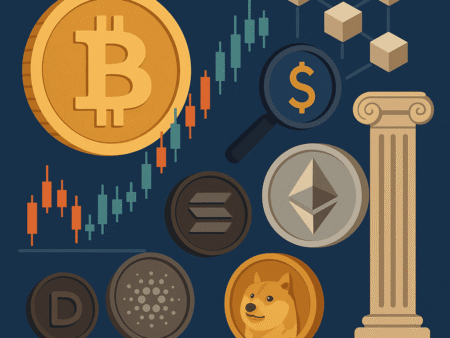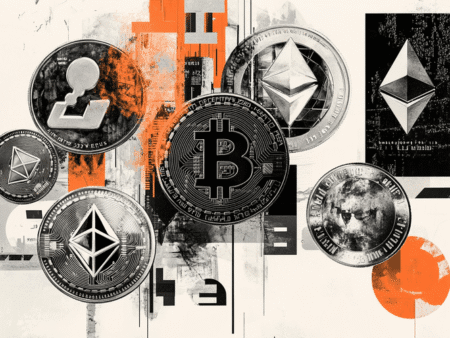Bitcoin is up this year and may be about to go through a supercycle of appreciation. Analysts are observing signs similar to those of major rallies in the past, such as in 2017 and 2021, and believe that the price of BTC is still far from the top.
If these signs are confirmed, Bitcoin could exceed US$150,000 in the coming months.
A supercycle would be a much larger increase than those seen in previous cycles, driven by new factors such as the entry of institutional investors, growing adoption by companies and governments, the controlled issuance of coins after the halving, in addition to the strong retention of BTC by long-term investors.
Comparisons with past cycles
To understand better, it is necessary to look at the previous Bitcoin cycles. In 2017, the currency went from US$1,000 to almost US$20,000 in less than 12 months.
In 2021, it came close to US$69,000 after a series of peaks and corrections. In both cases, the cycles had a similar structure: a phase of accumulation, a progressive rise, a parabolic peak and, then, a sharp fall.
Now, in 2025, the data indicates that Bitcoin is following a pattern very similar to previous cycles — but with some important differences.
According to a chart called “BTC Growth since cycle low”, the current performance is aligned with the 2016–2017 and 2020–2021 cycles.
This is despite having gone through banking crises, geopolitical tensions, regulatory changes and other uncertainties.
Historically, the top of Bitcoin cycles usually happens around 1,100 days after the bottom. Today, we are around day 900 of this new cycle.
If the logic is repeated, there is still plenty of room for BTC to continue rising until it finds its peak — which may be closer to US$150,000 than many imagine.
Technical indicators reinforce the supercycle thesis
Among the most followed indicators in the market is the MVRV-Z Score, which assesses the difference between the market price and the realized value of Bitcoin, adjusted for long-term patterns.
This indicator has already reached 3.39 when Bitcoin reached US$73,000 at the beginning of the year — a high level, but still far from the historical peaks seen in 2017.
What is striking is the pattern of behavior similar to the 2013 cycle, when Bitcoin had two major peaks before collapsing.
In 2025, we already had a top before the halving (US$74,000) and we are approaching a possible second top (which may exceed US$100,000).
If a third peak occurs later this year, Bitcoin may be experiencing something unprecedented: a cycle with three tops — which reinforces the idea of a supercycle.
A study by Bitcoin Magazine Pro revealed that the current market behavior has 91.5% similarity to the 2013 cycle.
The 2017 rally, by comparison, had 58.6% correlation, while the 2021 cycle presents a weaker correlation in terms of behavior, despite the price action having maintained a similar technical pattern (~75%).
Long-term investors remain confident
Another important point that feeds this narrative is the behavior of the so-called “HODLers” — investors who keep their bitcoins for more than a year.
Blockchain data shows that, even with the recent increase, most BTC holders are not selling.
The so-called “HODL 1+ year wave” continues to grow, which is rare in bull cycles.
This behavior indicates that investors believe the price is still cheap, even with BTC trading above US$65,000.
Historically, when many sell their bitcoins, this signals that the top is near.
But, for now, this mass sale has not happened — which may indicate that the market still has room to rise.
In addition, the rate of change of the HODL wave shows a neutral point, distant from the peaks of coin distribution. This means that the market is far from a scenario of exaggerated euphoria, and that many investors continue to accumulate, not sell. It is another sign that there is confidence in the long term.
Institutional demand growing and supply falling
Another factor that could accelerate this rise is the imbalance between supply and demand. With the 2024 halving, the amount of new bitcoins being created every 10 minutes has halved.
This reduces the supply. At the same time, demand for BTC has increased, mainly coming from large investment funds, ETFs and companies.
Bitcoin ETFs approved in the US and other countries are moving billions of dollars.
With each new flow to these funds, more bitcoins are withdrawn from the market and placed in custody — which contributes to scarcity. With fewer coins available and more people wanting to buy, the price tends to rise.
Stablecoins like USDT and USDC have also helped boost the market. They function as a gateway to Bitcoin, making life easier for those who want to buy quickly without depending on banks. The growth of these currencies is directly linked to the increase in volume traded in BTC.
What if it’s not a supercycle?
Of course, not all analysts are convinced that a supercycle will happen. Some point out that the market has already risen a lot and that a correction could happen at any moment.
Others remember that, despite the good signs, the global macroeconomic scenario still has uncertainties, such as high interest rates, inflation and political instability.
But even if there is no parabolic explosion in the coming months, the fact is that the Bitcoin market is more solid than ever.
The entry of institutional investors, the strengthening of infrastructure, adoption by governments and companies, in addition to the maturation of the average investor, make the current scenario different from any previous cycle.
🔮 Towards US$ 150,000?
The question everyone is asking now is: how far can Bitcoin go? No one has an exact answer, but the data suggests that the current cycle is still far from over.
Investor behavior, technical patterns and market dynamics point to a possible new historical high.
If the supercycle really happens, it would not be absurd to see Bitcoin exceed US$150,000 still in 2025.
This would transform the current year into one of the most remarkable in the history of digital currency — and consolidate BTC as a global asset of value reserve.










